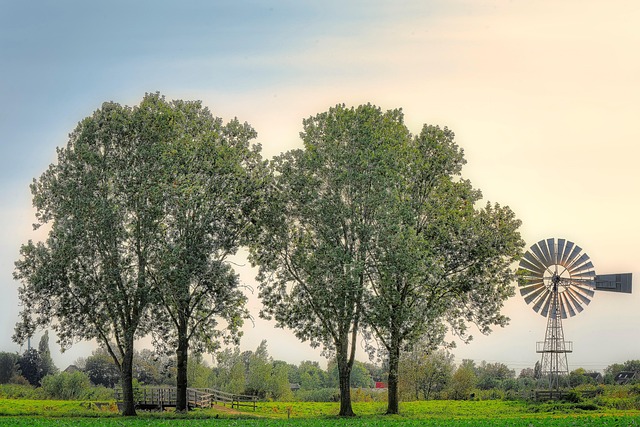For New Bedford, Massachusetts homeowners looking to enhance their outdoor spaces, DIY fence installation offers a cost-effective and rewarding project. This comprehensive guide navigates the process step-by-step, from understanding local regulations to selecting the ideal fence for your yard. We’ll walk you through precise measurements, gathering essential tools and materials, digging and marking post holes, assembly, attachment, and final touches, ensuring a sturdy and aesthetically pleasing addition to your property.
- Understanding New Bedford's Fencing Regulations
- Choosing the Right Fence for Your Yard
- Measuring and Planning Your Fence Layout
- Gathering Necessary Tools and Materials
- Digging and Marking Post Holes
- Assembly, Attaching, and Final Touches
Understanding New Bedford's Fencing Regulations
Before installing a fence in New Bedford, it’s crucial to understand the local regulations and permits required. The city of New Bedford has specific rules regarding fence height, materials, and placement, designed to maintain neighborhood aesthetics and property lines. Check with the New Bedford Planning Department or Building Department to obtain any necessary permits and confirm compliance with these regulations. Failing to adhere to local guidelines could result in fines or mandatory removal of the fence.
Understanding these regulations is essential for a smooth DIY fence installation process. Permits typically outline permitted fence types, maximum heights, and spacing requirements. By familiarizing yourself with these guidelines beforehand, you can ensure your fence design aligns with city standards, saving you time and potential headaches down the line.
Choosing the Right Fence for Your Yard
When considering fence installation in New Bedford, Massachusetts, selecting the appropriate fence type is a crucial initial step. Homeowners should evaluate their yard’s unique characteristics, including size, shape, and surrounding landscape. For instance, a quaint, narrow backyard may better suit a low-profile wooden fence, while a spacious, multi-level property could benefit from a more robust and tall vinyl or chain-link option for added privacy.
Additionally, functional considerations should factor into the decision. Fences serve various purposes; some offer aesthetic appeal, while others provide security, safety, or noise reduction. Understanding your primary goals will guide you in choosing between different materials, designs, and styles to create a fence that enhances your New Bedford property seamlessly.
Measuring and Planning Your Fence Layout
Before installing a fence, careful planning is key. Start by examining your yard and identifying the area where you want the fence to be placed. Measure the perimeter to get an exact size for the materials needed. Consider factors like existing structures, trees, or utility lines that might impact the layout. Create a basic sketch of your desired fence alignment, keeping local regulations in mind regarding property lines and set-backs.
This initial step will save you time and frustration later on. Accurate measurements ensure your fence is straight and secure, fitting seamlessly into your New Bedford, Massachusetts yard’s landscape without any legal or structural issues.
Gathering Necessary Tools and Materials
Before you begin your DIY fence installation project, make sure you have all the necessary tools and materials. This includes a measuring tape, chalk line, post-hole digger, hammer or power drill, rebar, concrete mix, fence posts, fencing material (like wood or vinyl), brackets, and hardware such as nails or screws. It’s important to choose tools that are suitable for the task at hand, ensuring you can work efficiently without any hiccups.
Additionally, gather safety gear including gloves, eye protection, and a hard hat if you have tall fences to install. Having all your supplies ready beforehand will save time and ensure a smoother installation process, so take some extra moments to double-check your list before starting.
Digging and Marking Post Holes
Before installing your fence, one of the most crucial steps is digging and marking post holes. In New Bedford, Massachusetts, with its diverse terrain, understanding your property’s landscape is key. Start by identifying where each fence post will go, considering factors like gradient, vegetation, and existing structures.
Use stakes and string to outline your desired fence line as a guide. Then, mark the spots where the posts will be placed. Digging holes requires caution; ensure they’re deep enough—typically one-third to half the length of the post—and wide enough (about 8-12 inches) to accommodate the post’s footing. Proper spacing between holes is essential for a sturdy fence, usually between 6 to 8 feet apart, depending on the fence type and local regulations.
Assembly, Attaching, and Final Touches
Once your fence posts are securely in place, it’s time to focus on assembly, attaching, and adding those final touches. Start by attaching the horizontal rails to the posts using brackets or screws. Ensure these are level and securely fastened. Next, attach the pickets (vertical boards) to the rails, following manufacturer instructions for spacing and placement. Use nails or screws suitable for your fence material. Double-check connections at each joint to ensure stability. Finally, add any desired final touches like gates, latches, or decorative elements. Ensure all hardware is securely fastened, and your new fence is ready to stand the test of time.
